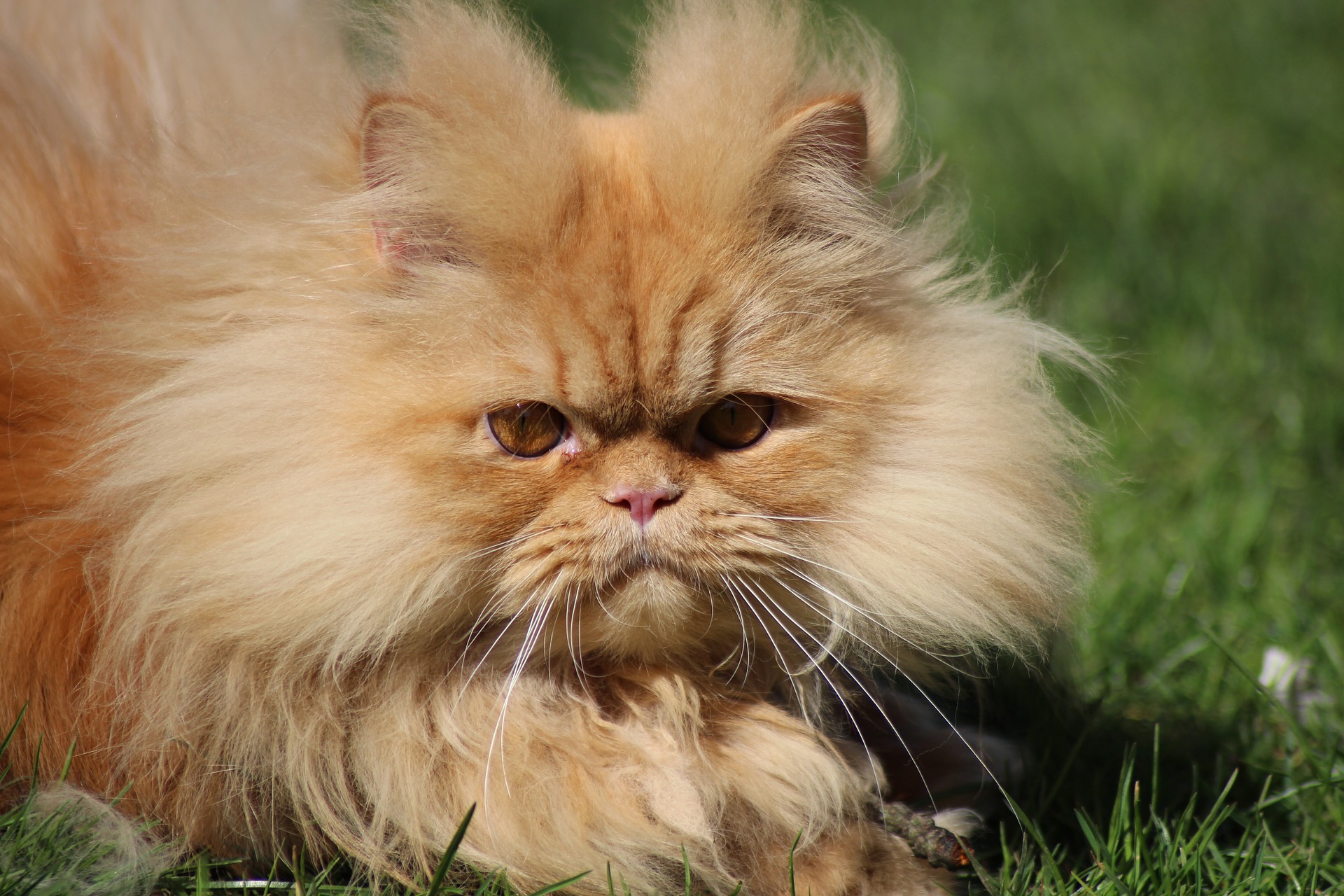Are you a proud owner of a Persian cat? If so, you probably want to ensure that your furry companion is happy, active, and healthy. In this article, we’ll discuss some tips and ideas to keep your Persian cat active and in good shape. Whether you’re a seasoned cat owner or new to the feline world, this article will provide you with valuable information to enhance your cat’s well-being. So, let’s dive in and learn more about how to keep your Persian cat active and healthy!
Persian cats are known for their luxurious coats and calm nature. However, it’s important to remember that they still require regular exercise and mental stimulation to stay healthy. We’ll explore various ways to keep your Persian cat active, such as interactive toys, puzzle feeders, and playtime with you. Additionally, we’ll discuss the benefits of regular exercise, such as maintaining a healthy weight and preventing behavioral issues.
Furthermore, we’ll delve into the topic of nutrition and explore what a balanced diet for a Persian cat looks like. We’ll talk about the importance of providing high-quality cat food and the right portion sizes to ensure that your cat maintains a healthy weight. Additionally, we’ll provide tips on how to make mealtimes more engaging and stimulating for your feline friend.
In conclusion, this article aims to provide you with a comprehensive guide on how to keep your Persian cat active and healthy. By implementing the tips and suggestions we discuss, you can ensure that your furry companion enjoys a happy and fulfilled life. So, if you’re ready to learn more about keeping your Persian cat in top shape, continue reading our upcoming posts on http://persiancatdude.com! Remember, a healthy and active cat is a happy cat!
Keeping Your Persian Cat Active and Healthy
Persian cats are not only known for their stunning beauty, but also for their calm and gentle nature. These majestic felines require special care to maintain their well-being and ensure they live a long and healthy life. In this article, we will explore various aspects of caring for a Persian cat, including their nutritional needs, grooming requirements, exercise and playtime, healthcare, litter box maintenance, handling behavioral issues, training techniques, dental health, preventing obesity, understanding Persian cat breeds and traits, socializing, seasonal care, and more. By following these guidelines, you can provide your beloved Persian cat with a fulfilling and active lifestyle.
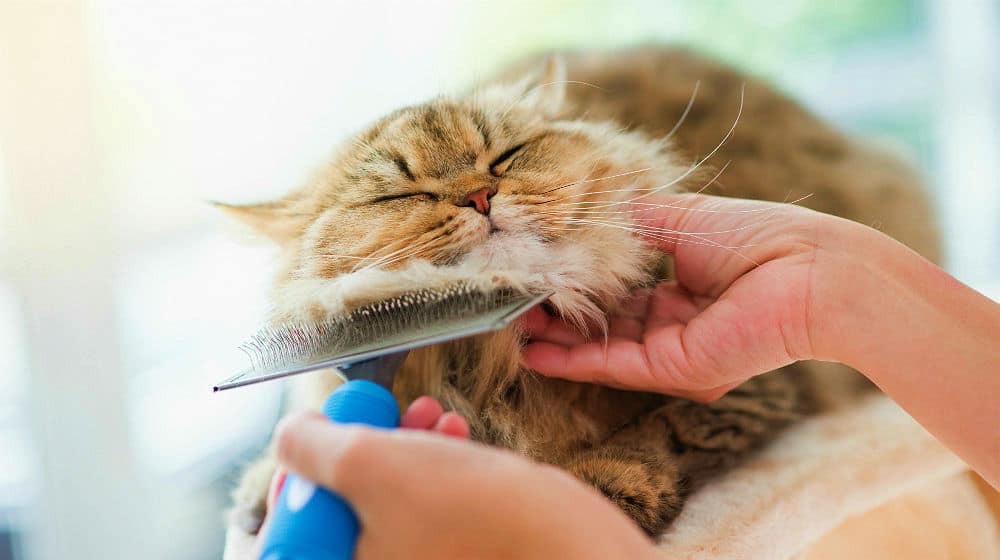
Nutritional Needs of Persian Cats
Importance of a Balanced Diet
A balanced diet is crucial for meeting the nutritional needs of your Persian cat. Unlike other cat breeds, Persian cats require specific nutrients to maintain their long and luxurious coat. A diet rich in protein, healthy fats, vitamins, and minerals is essential for their overall health and well-being. Proper nutrition supports their immune system, promotes healthy digestion, and helps prevent common health issues such as urinary tract problems and obesity.
Recommended Food for Persian Cats
When it comes to choosing the right cat food for your Persian cat, opt for high-quality commercial cat food that is specially formulated for their specific needs. Look for a brand that contains a high percentage of animal-based protein, essential fatty acids, such as omega-3 and omega-6, and nutrients like taurine, which is crucial for their heart health. Avoid cat foods that contain fillers, artificial colors, and preservatives, as they provide little nutritional value and may even be harmful to your Persian cat’s health.
Avoiding Harmful Ingredients in Cat Food
Certain ingredients can be harmful to Persian cats and should be avoided. Persians are prone to allergies, so it’s important to avoid common allergens such as grains, soy, and dairy products. Additionally, some cat foods may contain ingredients such as onion, garlic, and chocolate, which can be toxic to cats. Always check the ingredients list and consult with your veterinarian to ensure you are feeding your Persian cat a safe and nutritious diet.
Meal Portions and Feeding Schedule
To maintain a healthy weight and prevent overeating, it is important to establish a feeding schedule and portion control for your Persian cat. Divide their daily portion into smaller meals throughout the day to avoid overfeeding. Additionally, monitor their weight regularly and adjust their portion size accordingly. It’s important to note that Persian cats have a tendency to develop hairballs, so consider feeding them a hairball control formula or providing them with a hairball remedy to aid in digestion.
Regular Grooming for Persian Cats
Brushing the Persian Cat’s Long Coat
One of the defining features of a Persian cat is its long and luxurious coat. However, this exquisite fur requires regular grooming to prevent matting and keep it in pristine condition. Daily brushing is recommended to remove loose hair, prevent tangles, and minimize the risk of hairballs. Invest in a high-quality, metal-toothed comb or a brush specifically designed for Persian cats to maintain their coat’s beauty and prevent discomfort or skin irritations.
Bathing and Drying Techniques
Bathing a Persian cat is an essential part of their grooming routine. However, they are not fond of water, so it is important to introduce them to bathing gradually and make it a positive experience. Use a cat-friendly shampoo that is mild and hypoallergenic to prevent dryness or irritation. After bathing, gently pat their coat dry with a towel or use a low heat setting on a blow dryer, ensuring that it is not too loud or close to their sensitive ears.
Nail Trimming and Eye Cleaning
In addition to regular brushing and bathing, Persian cats require regular nail trimming to prevent their nails from becoming too long or sharp. Use a cat nail clipper or a rotary nail file designed specifically for cats to trim their nails safely. It is also important to clean their eyes daily to prevent tear staining and the build-up of debris. Use a veterinarian-recommended eye wash solution or a damp cotton ball to gently clean their eyes.
Checking for Fleas and Ticks
Regular flea and tick prevention is essential for the well-being of your Persian cat. Check their coat regularly for any signs of flea dirt or ticks. Use a fine-toothed flea comb to comb through their fur, paying close attention to their neck, back, and tail. If you find any fleas or ticks, consult with your veterinarian to determine the best course of action and to prevent potential infestations.
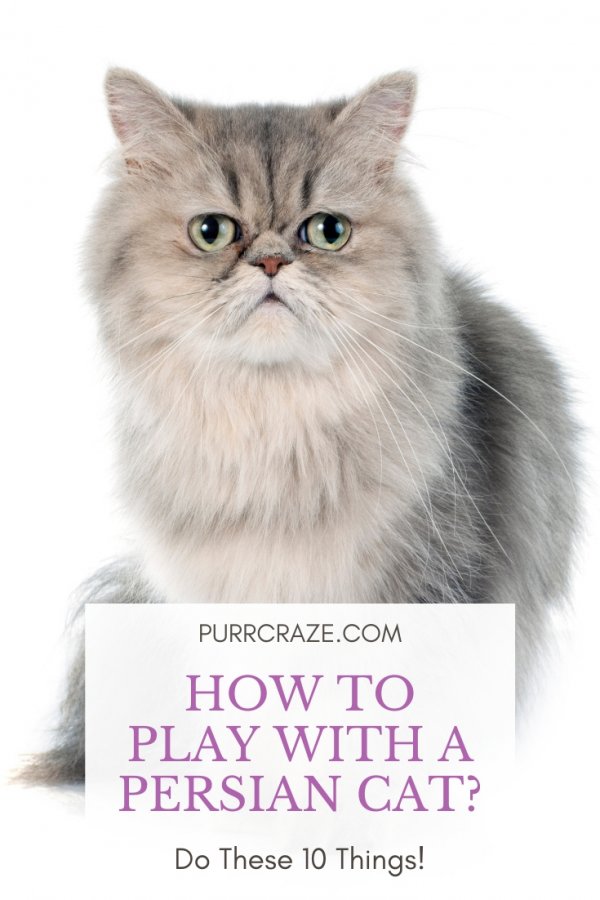
Creating an Enriching Environment
Providing Interactive Toys
Persian cats may have a reputation for being couch potatoes, but it is important to keep them mentally and physically stimulated to prevent boredom and encourage exercise. Provide a variety of interactive toys, such as puzzle toys, treat-dispensing toys, and wand toys, to engage their natural predatory instincts and keep them entertained. Rotate their toys regularly to keep their interest and prevent them from becoming bored.
Setting Up Climbing Structures
Persian cats enjoy observing their surroundings from a higher vantage point. Set up climbing structures, such as cat trees or shelves, to allow them to explore different levels and satisfy their natural climbing instincts. Ensure that the structures are sturdy and provide a comfortable resting area for them to nap or observe their surroundings.
Creating Safe Outdoor Spaces
While Persian cats are primarily indoor cats, they can still benefit from supervised outdoor time in a safe and secure environment. Create an enclosed outdoor space, such as a catio or a mesh enclosure, where your Persian cat can safely experience the sights, sounds, and smells of the outdoors. This allows them to enjoy fresh air and sunlight while minimizing the risks of accidents, predators, or exposure to harmful substances.
Creating Resting and Hiding Areas
Persian cats appreciate having quiet and comfortable areas where they can retreat and relax. Provide them with cozy beds, soft blankets, or cat caves in different areas of your home. These designated resting areas allow them to unwind and recharge, especially during moments when they may feel stressed or overwhelmed.
Exercise and Playtime for Persian Cats
Importance of Physical Activity
While Persian cats are generally less active compared to some other cat breeds, regular exercise is still important for their overall health and well-being. Engaging in physical activity helps to maintain a healthy weight, prevent obesity-related health issues, and stimulate their minds. Additionally, exercise provides an outlet for their natural hunting instincts, keeping them mentally and physically stimulated.
Choosing the Right Toys for Exercise
When selecting toys for exercise, consider your Persian cat’s preferences and individual interests. Toys that encourage chasing, pouncing, and interactive play are ideal. Feather toys, laser pointers, and wand toys are great options to engage your Persian cat in active play sessions. Experiment with different types of toys to determine which ones they enjoy the most and rotate them regularly to keep them engaged.
Engaging in Interactive Play
Interactive playtime with your Persian cat not only provides physical exercise but also strengthens the bond between you and your feline companion. Dedicate regular play sessions where you actively engage with your cat using stimulating toys or even simple household items like crumpled paper balls or catnip-filled toys. This interactive playtime allows them to engage their natural instincts and provides them with both mental and physical stimulation.
Indoor Exercise Options
Indoor exercise options are particularly important for Persian cats due to their tendency to be indoor dwellers. Consider setting up a vertical scratching post or a cat tree that provides climbing opportunities. Provide puzzle toys or treat-dispensing toys that require mental effort to obtain rewards. In addition, engage your Persian cat in gentle play sessions with feather wands or laser pointers to encourage movement and keep them active indoors.
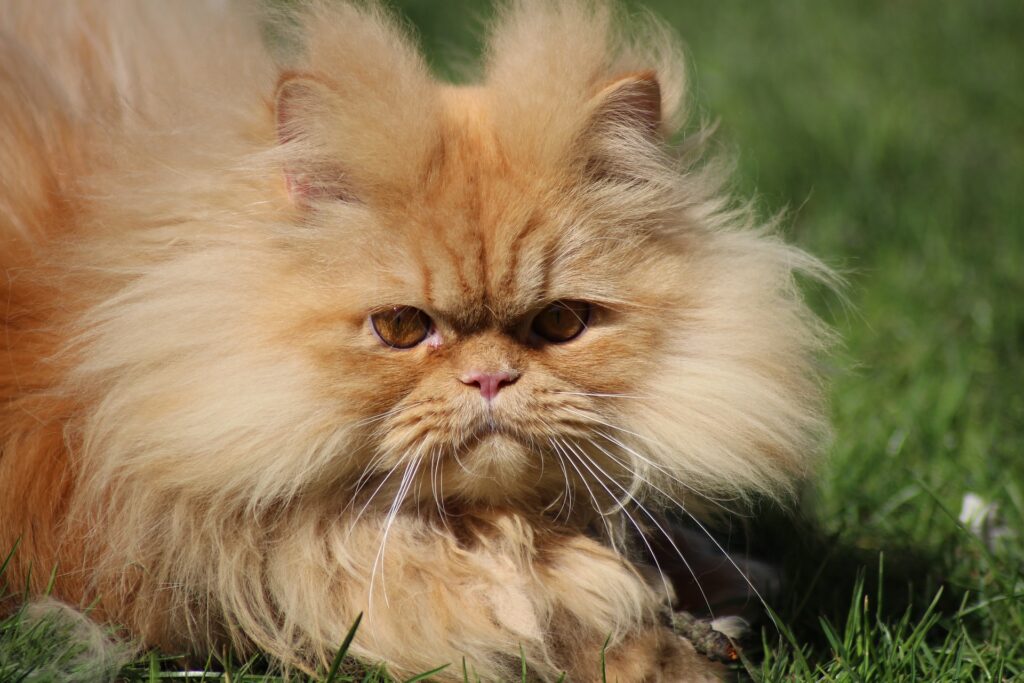
Healthcare for Persian Cats
Regular Check-ups and Vaccinations
Regular veterinary check-ups are essential for maintaining the health of your Persian cat. Schedule annual wellness exams to monitor their overall health, detect any potential health issues early, and ensure they are up to date on vaccinations. Your veterinarian will perform a thorough examination, check vital signs, and may recommend additional preventive treatments, such as parasite control, based on your cat’s individual needs.
Dealing with Common Health Issues
Persian cats are prone to certain health issues, and it is important to be aware of these potential problems. Some common health concerns for Persian cats include eye and dental problems, respiratory difficulties, kidney disease, and polycystic kidney disease (PKD). Regular veterinary check-ups and open communication with your veterinarian can help to identify and manage these issues effectively.
Dental Care for Persian Cats
Proper dental care is crucial for maintaining the overall health and well-being of your Persian cat. Regular tooth brushing is recommended to prevent dental disease, tartar buildup, and bad breath. Use a cat-specific toothbrush and toothpaste to clean their teeth gently. Additionally, providing dental treats or toys designed to promote oral hygiene can help to reduce plaque and tartar buildup.
Recognizing Signs of Illness
As a responsible cat owner, it is important to be vigilant and recognize the early signs of illness in your Persian cat. Monitor their eating habits, litter box behavior, energy levels, and general demeanor. Any changes in appetite, weight, litter box habits, or behavior should be addressed with your veterinarian promptly. Quick intervention can often make a significant difference in the outcome of any potential health issue.
Proper Litter Box Maintenance
Choosing the Right Litter Box
Choosing the right litter box is essential for maintaining proper litter box habits and preventing accidents. Consider a litter box that is spacious enough for your Persian cat to move comfortably. Opt for a litter box with low sides to accommodate their long fur and prevent litter from scattering outside the box. Experiment with different litter options to find the one that your cat prefers and that is easy to clean.
Litter Box Placement and Accessibility
Proper placement of the litter box is important to ensure that your Persian cat can easily access it and feel comfortable using it. Place the litter box in a quiet and private area, away from their food and water bowls. Make sure the litter box is easily accessible, especially for older cats or cats with mobility issues. Avoid placing the litter box in areas with high foot traffic or loud noises that can disturb their privacy.
Cleaning and Odor Control
Cleanliness and odor control are essential when it comes to maintaining a healthy litter box environment. Scoop the litter box daily to remove waste and clumps. Regularly change the litter and thoroughly clean the litter box using mild, unscented soap or cat-specific cleaning products. Additionally, consider using odor-controlling litter or placing an activated carbon filter near the litter box to minimize unpleasant odors.
Litter Box Training
Proper litter box training is crucial, especially for new kittens or cats transitioning to a new environment. Show your Persian cat the location of the litter box when you bring them home and allow them to familiarize themselves with it. Encourage positive associations by rewarding them when they use the litter box correctly. If accidents occur, clean them promptly and avoid scolding your cat, as it can create negative associations and hinder the litter box training process.

Handling Behavioral Issues
Separation Anxiety and Loneliness
Persian cats are known for their affectionate nature and may develop separation anxiety or loneliness when left alone for extended periods. To address this issue, provide them with plenty of mental stimulation, interactive toys, and access to different areas of your home. Consider leaving a piece of your clothing or a familiar blanket in their sleeping area to provide comfort and reassurance when you are away.
Aggression and Scratching Behavior
Aggression and scratching behavior can be challenging to manage in Persian cats. If your cat displays aggressive behavior, it is important to identify the underlying cause. Consult with a veterinarian or a professional animal behaviorist to determine the best course of action. Provide appropriate scratching posts and regularly trim their nails to redirect their scratching behavior and minimize damage to furniture and belongings.
Marking and Urination Problems
Marking and urination problems can be a distressing issue for both you and your Persian cat. If your cat is marking or urinating outside of the litter box, consult with your veterinarian to rule out any underlying medical conditions. Ensure that the litter box is clean, easily accessible, and located in a quiet and private area. Consider using pheromone diffusers or sprays to promote a calming environment and discourage marking behavior.
Solving Attention-Seeking Behaviors
Persian cats crave attention and may exhibit attention-seeking behaviors if they feel neglected or bored. Provide regular play sessions, engage in interactive playtime, and offer plenty of affection and attention to fulfill their social needs. Set aside dedicated time each day to bond with your Persian cat and provide mental and physical stimulation to help alleviate attention-seeking behaviors.
Training Techniques for Persian Cats
Teaching Basic Commands
Persian cats can be trained to respond to basic commands such as “sit,” “stay,” and “come.” Use positive reinforcement techniques such as treats and praise to reward desired behaviors. Keep training sessions short and fun, and always end on a positive note. Be patient and consistent with your training efforts, as Persian cats may take more time to learn compared to some other cat breeds.
Using Positive Reinforcement
Positive reinforcement is key when training Persian cats. Reward desired behaviors with praise, treats, or playtime to reinforce their understanding of what is expected. Avoid punishment or negative reinforcement, as it can cause fear or anxiety and hinder the training process. Consistency and positive reinforcement will yield better results and help foster a trusting bond between you and your Persian cat.
Addressing Behavior Problems Through Training
Training can also be used to address specific behavior problems in Persian cats, such as scratching furniture or excessive meowing. For example, redirect their scratching behavior to appropriate scratching posts by providing them with enticing scratching surfaces and regularly trimming their nails. Excessive meowing can be managed by providing mental and physical stimulation, as well as addressing any underlying health issues or environmental stressors.
Encouraging Good Etiquette
Persian cats have a gentle and well-mannered nature but may benefit from training to encourage good etiquette. For example, training them to wait patiently for their meals, not to jump on countertops or furniture, and to use scratching posts instead of household items. Use positive reinforcement and consistency to establish good etiquette and ensure your Persian cat’s behavior aligns with your household rules.
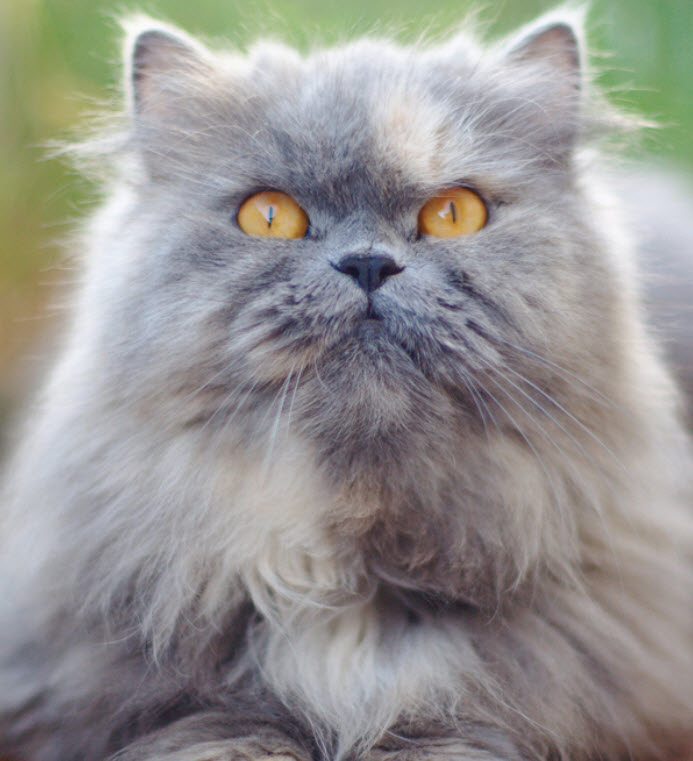
Maintaining Dental Health
Importance of Dental Care
Dental care is often overlooked but plays a crucial role in maintaining the overall health of your Persian cat. Poor dental hygiene can lead to dental disease, gum infections, and even systemic health issues. Therefore, it is essential to prioritize dental care to prevent these potential problems and ensure your cat’s oral health.
Brushing Persian Cat’s Teeth
Regular tooth brushing is the gold standard for maintaining your Persian cat’s dental health. Use a cat-specific toothbrush and toothpaste to gently brush their teeth. Start by introducing the toothbrush and toothpaste gradually, allowing your cat to develop a positive association. Brush their teeth at least two to three times a week, gradually working up to daily brushing, to remove plaque and prevent tartar buildup.
Alternate Dental Care Options
If your Persian cat is resistant to tooth brushing, alternate dental care options can help to supplement their dental hygiene routine. Dental treats, dental chews, and water additives designed specifically for cats can assist in reducing plaque and tartar buildup. Consult with your veterinarian to determine the most suitable dental care options for your Persian cat’s individual needs.
Dealing with Bad Breath
Bad breath is not only unpleasant but can also be a sign of underlying dental issues. Regular dental care, including tooth brushing and professional dental cleanings, can help combat bad breath. Additionally, providing dental treats or toys designed to promote oral hygiene can help freshen your Persian cat’s breath. If persistent bad breath persists, consult with your veterinarian to rule out any underlying health issues.
Preventing Obesity in Persian Cats
Healthy Weight Management
Maintaining a healthy weight is crucial for preventing obesity-related health issues in Persian cats. Provide a balanced and portion-controlled diet to prevent overeating and unnecessary weight gain. Monitor their weight regularly and consult with your veterinarian to determine the appropriate caloric intake for your cat’s age, activity level, and individual needs.
Monitoring Caloric Intake
To prevent overfeeding and subsequent weight gain, it is important to monitor your Persian cat’s caloric intake. Follow the feeding guidelines provided on the cat food packaging and adjust portion sizes based on your cat’s activity level and weight. Keep in mind that Persian cats have a tendency to be less active, so it is important to ensure they are not consuming excess calories.
Encouraging Exercise and Play
Regular exercise and playtime are essential for maintaining a healthy weight and preventing obesity in Persian cats. Engage in interactive play sessions, using toys that encourage movement and exercise. Allocate dedicated playtime each day to engage your Persian cat in active play and provide mental and physical stimulation.
Avoiding Overfeeding
Persian cats may have an insatiable appetite, making it important to avoid overfeeding. Follow the recommended portion sizes provided on the cat food packaging and resist the temptation to provide excessive treats or table scraps. Stick to a feeding schedule and use puzzle toys or interactive feeders to slow down eating and provide mental stimulation during mealtime.
Understanding Persian Cat Breeds and Traits
Different Persian Cat Coat Types
Persian cats are known for their luxurious and voluminous coats, which come in a variety of different types. From the flat-faced Peke-faced Persian to the traditional doll-faced Persian, each coat type has its own unique characteristics. These coat types include solid, shaded, smoke, tabby, bicolor, and more. Understanding the different coat types can help you appreciate the diverse beauty of Persian cats.
Personality Traits of Persian Cats
Persian cats are cherished for their calm and gentle nature. They tend to be affectionate, docile, and enjoy a peaceful environment. Persian cats are typically well-suited for indoor living, as they are not as active compared to some other cat breeds. However, it is important to provide them with mental and physical stimulation to prevent boredom and encourage an active lifestyle.
Variations in Physical Features
In addition to their coat types, Persian cats also exhibit variations in physical features. Some Persian cats may have extreme facial features, such as a flat face or a more traditional doll-face appearance. Additionally, Persian cats come in a range of color variations, including solid colors, tortoiseshell patterns, and pointed patterns, such as Himalayan Persians. These physical features contribute to the charm and uniqueness of each Persian cat.
Common Health Concerns by Breed
Persian cats are prone to certain health concerns based on their breed. These include eye and nasal issues, such as excessive tearing and difficulty breathing due to their short nasal passages. Additionally, Persian cats are susceptible to polycystic kidney disease (PKD), a hereditary condition that can affect kidney function. Being aware of these breed-specific health concerns can help you provide appropriate care and seek veterinary assistance when necessary.
Socializing Persian Cats
Introducing Persian Cats to Other Pets
Successful introduction of a Persian cat to other pets requires careful planning and gradual introduction. Be patient and allow controlled interactions between your Persian cat and other pets. Use positive reinforcement techniques with treats and praise to create positive associations. Provide separate areas where each pet can retreat to if they feel overwhelmed and gradually increase their supervised interactions until they are comfortable together.
Building Trust and Bonding
Building trust and a strong bond is essential for the well-being of your Persian cat. Spend quality time with your cat, engage in gentle play sessions or grooming, and offer affection and attention. Allow your cat to approach you on their terms and avoid forcing interactions. Respect their personal space and provide a calm and predictable environment to foster trust and strengthen your bond.
Managing Social Interactions
Persian cats thrive in a calm and gentle environment and may become stressed or anxious in certain social situations. Reduce stressful interactions by gradually introducing new people or pets and providing a safe space for your Persian cat to retreat to when feeling overwhelmed. Consult with a professional animal behaviorist if you encounter persistent socialization issues.
Recognizing Stress and Anxiety
Persian cats can be sensitive to changes in their environment and may experience stress or anxiety. Keep an eye out for signs of stress, such as excessive grooming, hiding, aggression, or changes in appetite or litter box habits. Provide a secure and comforting environment, free from unnecessary stressors, and consult with a veterinarian or professional behaviorist if you suspect your Persian cat is experiencing anxiety.
Seasonal Care for Persian Cats
Managing Shedding in Different Seasons
Persian cats have a thick and luxurious coat that requires regular grooming and care, especially during shedding seasons. Brush your Persian cat’s coat daily to remove loose hair and prevent matting. In spring and fall, when shedding is more significant, consider using a de-shedding tool or an undercoat rake to remove excess hair effectively. The regular grooming routine will help keep shedding under control and minimize the risk of hairballs.
Temperature and Climate Considerations
Persian cats are more susceptible to temperature extremes due to their dense coat and shorter nasal passages. During hot weather, provide them with access to cool and well-ventilated areas, ensure they have fresh water available at all times, and avoid exposing them to direct sunlight for extended periods. During cold weather, provide warm and cozy areas for them to rest, and avoid exposing them to drafts or chilly temperatures.
Protecting from Allergies and Pollutants
Persian cats can be prone to allergies and respiratory issues, so it is important to minimize exposure to potential allergens and pollutants. Keep their living space clean and free from dust, smoke, and strong odors. Use air purifiers or open windows for proper ventilation. Consult with your veterinarian if you suspect your Persian cat is experiencing allergy-related symptoms, such as sneezing, itching, or skin irritations.
Holiday Safety Tips
During holidays and festive seasons, it is important to keep your Persian cat’s safety in mind. Many decorations, plants, and foods can be toxic to cats. Keep toxic plants out of reach and secure holiday decorations to prevent accidental ingestion or entanglement. Avoid sharing holiday foods that are harmful to cats, such as chocolate, onions, or grapes. Create a safe and stress-free environment for your Persian cat during holiday celebrations.
Conclusion
Owning a Persian cat comes with the responsibility of providing an active and healthy lifestyle for your feline companion. From meeting their nutritional needs and addressing grooming requirements to engaging in exercise and playtime, maintaining proper healthcare and dental care, and understanding their breed characteristics, there are numerous aspects to consider when caring for a Persian cat. By following these guidelines and providing continuous care and love, you can create a fulfilling life for your Persian cat and ensure their well-being for years to come. Remember to consult with your veterinarian for any personalized advice or concerns regarding your Persian cat’s specific needs.
Common Questions about Persian Cats:
-
Q: How often should I groom my Persian cat’s long coat? A: Daily brushing is recommended to prevent matting and keep their coat in pristine condition.
-
Q: What type of cat food is best for Persian cats? A: Choose high-quality cat food formulated specifically for Persian cats, ensuring it contains a high percentage of animal-based protein and healthy fats.
-
Q: How often should I schedule veterinary check-ups for my Persian cat? A: Annual wellness exams are recommended to monitor their overall health and ensure they are up to date on vaccinations.
-
Q: What are some common health issues in Persian cats? A: Persian cats are prone to eye and dental problems, respiratory difficulties, kidney disease, and polycystic kidney disease (PKD).
-
Q: How can I prevent obesity in my Persian cat? A: Monitor their caloric intake, encourage exercise and play, and avoid overfeeding. Consult with your veterinarian to determine suitable portion sizes and feeding guidelines.
-
Q: Can Persian cats be trained to follow basic commands? A: Yes, Persian cats can be trained using positive reinforcement techniques to respond to basic commands such as “sit,” “stay,” and “come.”
-
Q: How can I socialize my Persian cat with other pets? A: Introduce your Persian cat to other pets gradually and provide positive reinforcement to create positive associations. Supervise interactions until they are comfortable together.
-
Q: How often should I brush my Persian cat’s teeth? A: Regular tooth brushing, ideally two to three times a week, is recommended to maintain their dental health.
-
Q: What are the different coat types of Persian cats? A: Persian cats come in a variety of coat types, including solid, shaded, smoke, tabby, bi-color, and more.
-
Q: How can I manage shedding in my Persian cat? A: Regular grooming, including daily brushing and the use of de-shedding tools during shedding seasons, can help manage shedding and prevent matting.
